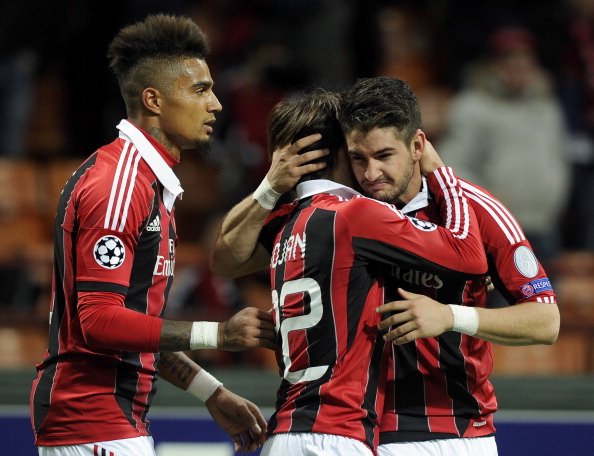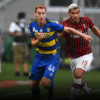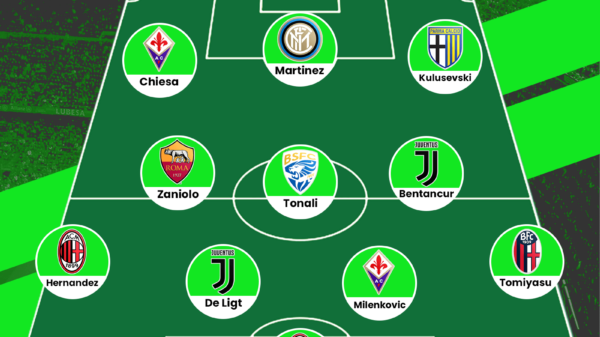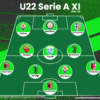Geoffrey Dore of Football Whispers joins us to talk about AC Milan, and their road to recovery.
Follow the blueprint. When it comes to football, failing to plan is planning to fail, and a lack of planning can lead to stagnation, even at the highest level. For years AC Milan were perceived to be one the biggest and greatest clubs in world football, dominating on both a domestic and European level. The Rossoneri had experienced periods of success during the 1950’s and 60’s that was then equipoised by a period of decline that resulted in them twice being relegated to Serie B in the early eighties. However, the club would re-emerge from their rut following Silvio Berlusconi’s acquirement of Milan in 1986, leading them to their most dominant period. But after once being able to attract players of the highest calibre, Milan find themselves riddled with issues that relegate memories of their prior standing in the game to a mere afterthought.
Perhaps the first occasion where Milan’s future problems became apparent was in 2006, when star forward Andriy Shevchenko sought pastures new by leaving to join Chelsea. Ultimately, the club would finish the season as European champions for a seventh – and to this date last – time, though Shevchenko’s departure should have been the precedent that invoked change. The club looked as though they would undertake a new strategic plan in the transfer market, electing to replace the Ukrainian with a young Ricardo Oliveira, while talented 20-year-old Yoann Gourcuff also arrived in Northern Italy. Alexandre Pato would be brought in the following year, but while the club seemed committed to their new transfer approach, unconvincing results meant it’s short-term method would come to the fore, bringing in stars such as Ronaldo and Ronaldinho who were not only no longer operating at their premium level, but whose salaries would likely be putting major strains on Milan’s finances.
The fall and rise of Juventus
If Milan harbors serious hopes of returning to past glories it is advisable that they aim to follow the direction employed by Juventus. The Bianconeri’s involvement in the 2006 Calciopoli scandal saw them receive the punishment of relegation to serie B, yet stalwarts such as Gianluigi Buffon, Alessandro Del Piero and Pavel Nedved all opted to remain in Turin. But while some were still willing to pledge their allegiance, the predicted mass exodus ensued, with the exits of no less than six first team players [Lilian Thuram, Fabio Cannavaro, Gianluca Zambrotta, Emerson, Patrick Veira and Zlatan Ibrahimović] decimating a team that had dominated Serie A for the past two seasons. Despite being docked nine points, an immediate return to Serie A was secured, but the repercussions of the scandal would ultimately bear fruit. In their absence Inter Milan had assumed the role of the dominant force in Italian football from a financial and competitive perspective, meaning Juventus had to rebuild.
While many expected the Old Lady to once more assume her role as the Italy’s gold standard, the process would prove to be gradual. Claudio Ranieri, Ciro Ferrara and Luigi Delneri all attempted to steady the ship, but having once been able to entice the brightest lights, Juve struggled to re-assert themselves. However, the arrival of former captain Antonio Conte as coach in 2011 helped coincide with the club’s new vision. Up to this point their transfer dealings had seemingly lacked structure and planning, acquiring players whose profiles were not necessarily what you’d have associated with Juventus. Yet under Conte there appeared to be a systematic objective to not only secure quality that that could improve the team, but to also be shrewder. The signing of Andrea Pirlo in 2011 perhaps best demonstrated where Juve were headed and where Milan had been, considering that the latter had deemed that the midfielder’s languid style no longer suited the team. Pirlo would go on to win four consecutive league titles with Juve.
Their new foresight on the field coincided with their ideas off it, moving into their new Juventus Stadium. The old Stadio Delle Alpi was one of a number of stadiums that received regeneration in preparation for the 1990 World Cup, but in recent times the ground would regularly fill just a quarter of its 69,000 capacity. Having outlaid their plans to build a multi-purpose stadium that could generate atmosphere [something the Delle Alpi lacked due to its running track] the club took the decision to dramatically reduce the capacity to 41,000, a curious step considering that the general consensus regarding clubs wanting to build new stadiums is to allow for increased capacity. But most importantly, at a reported cost of £88m using the club’s own money, Juventus are full owners of their home, diverging from the common trait adopted by rivals Milan, Inter, Lazio and Roma, whose stadiums are owned by their city councils. For Juventus, the key to this is that they are full beneficiaries of all commercial income and match day revenue, once more permitting them to compete financially with their European counterparts. Their advantage over the rest of Serie A was undoubtedly best exemplified when agreeing to pay the £75m release clause to prise Gonzalo Higuaín from Napoli.
Milan must halt the slide
Milan can boast to having won a Scudetto as recently as 2011 as defence mechanism to counteract the vultures who attempt to diminish their recent standing in the game. On paper they certainly appeared to have a team capable of competing at the highest level, but once again the shortcomings of a temporary fix were exposed, as financial instability resulted in the sales of Ibrahimović and Thiago Silva to Paris Saint-Germain. Since then the club has lacked direction on and off the pitch, looking for stopgap signings and free transfers not befitting of a once legendary football institution that should be aiming for better. Multiple managers have come and gone, meaning that any hopes of continuity are rendered null and void. The imminent takeover of the club by Chinese consortium Sino-Europe Sports Group promises to herald a new dawn for all those associated, though this had been shrouded in mystery due to it initially not being made clear who the actual investors were. Further doubts emerged last month when the firm was forced to deny reports in the Chinese media suggesting they had supplied Milan with a false bank guarantee.
But all those connected with Milan will be hoping for a smooth transaction, and thus the beginning of a much-needed rebuild. The club had put in place plans to build a new stadium, a move that is imperative if they are to compete financially. So far this season Milan has averaged just over 29,000 fans for home matches. For far too long the club’s fans have been forced to put up with mediocrity that has unfortunately become the norm, rather than the exception. However, the one thing that they can take comfort from is that thanks to Juventus, the path to righteousness has already been paved. Whether they choose to take it remains to be seen.



























































